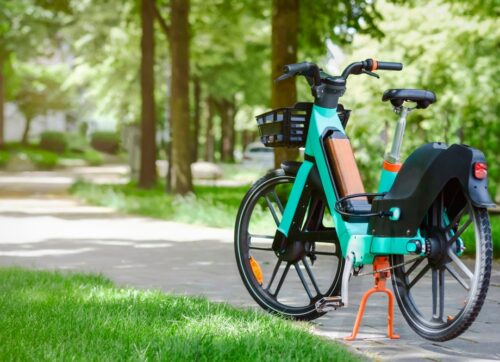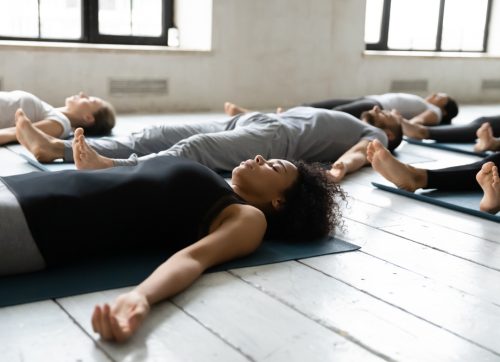
Training Environment - Outdoors vs. Indoors
When it comes to training, there are a million routes you can take. Many in the fitness community often advocate that training outside is better than training indoors or inside a gym, and they have their reasons for it.
- Author:
- Violet Lee
- Date:
- January 17 2024
When it comes to training, there are a million routes you can take. Many in the fitness community often advocate that training outside is better than training indoors or inside a gym, and they have their reasons for it.
However, as with anything, there are two sides to every coin. To explore both sides: the pros and cons of training outside and the pros and cons of training in a gym or home as related to each other.
The pros and cons of training in the gym or at home:
The strive for balance: gym and outdoor training are essential to reach training progress and an overall healthy lifestyle. Training in the gym has pros and cons that differentiate it from training outdoors, so let's look at them individually.
Pro #1 – Facilities
In the gym, you'll find many facilities that aren't present outdoors. If you ever need a rest area, restroom, changing room, shower, sauna, and so on, you have all of that available in many (if not most) gyms.
You can easily slip into your workout clothes, do your routine, shower, dress up, and leave the gym clean with your workout done.
Pro #2 – Equipment Variety
The most obvious benefit of the gym is that most of them have more equipment than you'll ever need to have a productive workout. You might need a bench press, squat rack, dumbbells, bars, or even a smith machine.
The available equipment is there to help you do precise exercises and target specific parts of your body, while your options for doing this outdoors are limited.
If you have a particular routine you've created, the gym is the best place to do it.
Pro #3 – Weight Variety
When progressing, especially in any strength training, you want to accurately track the weight you're lifting. You need all the little plates and dumbbells available – from the 50-pound down to the 5-pound plates.
This accuracy is crucial for those who desire to improve their strength training, as it will give them a clear idea of how much they're lifting and progressing through time. This level of accuracy is extremely difficult to do outside.
Pro #4 – It is Flexible and Versatile
Your workout routine is more flexible when you commit to working out at home. A gym's operating hours or class schedule won't limit your fitness options. You can exercise whenever you want. You can even break your workout up and complete it in shifts if that works best for you. Plus, thanks to the plethora of internet fitness videos, you can take a fitness class whenever you want.
Pro #5 – It is Convenient
Life is hectic, but working out at home makes it easy to fit fitness into your busy lifestyle. There's no need to waste time and energy gathering your stuff, packing your gym bag, driving across town, and fighting for a parking space. At home, you can put on suitable clothes, walk to the designated room, and start sweating. You can skip getting dressed if your pajamas can double as workout gear.
Con #1 – Self-consciousness
Have you ever heard the term "gymtimidation?" It's a genuine concern. Feeling self-conscious can create a daunting cycle when going to the gym because your desire to improve your physical fitness clashes with the fear of being judged by others. This self-consciousness amplifies as people contemplate entering a space filled with people who may seem fitter or more experienced.
After enrolling with a new gym membership, some may spend the first few months of their training at home before they even go to the gym.
You must realize that people will see you regardless of where you work out. There's nothing wrong with that. Being seen is an entirely irrational fear among gym newcomers, even though it's completely unwarranted.
Con #2 – Costs
Most gyms nowadays offer "premium" plans for those who want to get the most out of their training. Some of them even bind you with a contract!
Gyms can be pricey sometimes, especially the good ones, and if that's not a commitment you want to make, you'll be better off training outdoors.
Con #3 – Transportation
Going from and to the gym can sometimes be a pain.
If you live in a crowded place, you must pay for gas to spend an hour fighting traffic and dealing with bad weather only to get to the gym.
Not to mention, I've heard many people use it as an excuse not to go!
The pros and cons of outdoor exercise:
Now that we know how training in the gym is better (or worse) than training outdoors, let's get to the other side of the story. Once again, we'll break down the pros and cons of outdoor exercise, starting with its advantages.
Pro #1 – Environment Variety
Yes, maybe not in machines and weights, but the outdoors provides incredible training variety because the environment is so varied.
There is a feeling of ambiance when you're just jogging around and seeing all the different parks, houses, buildings, and nature around you. This ambiance makes the entire experience more alive and makes you want to be more active.
Exercising outside will keep you engaged and motivate you to push yourself more. Also, if you jog around the same route every day, you'll start creating milestones for yourself as you pass specific landmarks.
Milestones allow you to track your progress to know if you are getting faster and stronger.
Pro #2 – Elevated Mood
This sense of being outside, active, and tuning yourself into your environment has been researched and proven to elevate mood. The air, the sun, and the feeling of being out in the open promote dopamine production, improving your mood and motivating you to feel more active.
It's a natural sense of reinvigoration that you get just by being outside, and as long as the weather is perfect, you can lose yourself in your training easily and have the best workout experience of your life.
Pro #3 – Socialization
Meeting friends for a training session feels much more casual and fun when training outdoors.
Sometimes, the gym can make social exchanges seem awkward, but running into a friend outside or joining them for some jogging or a park workout makes for a revitalizing bonding experience.
Con #1 – The Weather!
Weather is the biggest problem you'll run into when training outdoors. You can't control it! I can't tell you how many times I've decided to work out outdoors, and it started to rain.
The other extreme, working out on hot summer days, can be potentially dangerous. Heat, weather with humidity, or dryness sometimes causes you to become dehydrated without you even realizing it.
Con #2 – The Public
When you're working out outdoors, you're in a public space.
It's the same as if you were in the gym, but more people will likely be around. (Unless you jog in some park that's secluded.)
This fact doesn't help with the idea of "gymtimidation."
You can still feel like people are judging you, even more so when outside. Once again, these fears are entirely unwarranted, but they are there.
Con #3 – No facilities
It's a fact – gyms are convenient. For that same reason, if you need to use the restroom while you're out working out, you've run into a problem. It's the same as when you need a shower or want to enjoy a few mirror selfies after your workout.
Depending on where you are, you might not have immediate access to what you need for a productive workout.
Even though this seems like a small con, it turns into a significant disadvantage when you're experiencing these facilities not being available.
Conclusion:
It boils down to whether you want to have the
(1) reinvigorating experience of outdoor workouts or
(2) the convenience of gyms.
From my perspective, you need a balance of both.
Both these training environments have benefits that you can use to your advantage (and you should.) But ultimately, what it comes down to is that neither is objectively better. It all depends on what matters more to you, how you train, and which outweighs the other in your subjective view.
Often, gym-goers get so caught up with making progress that they forget fitness is about healthy lifestyles. At other times, those who only focus on working out outdoors forget you need access to more structured equipment to make real progress.
Both training methods have their ups and downs, and that's precisely why we should try both. Only this way can we find out what we like doing and make that a part of a sustainable training lifestyle that brings us progress and enjoyment.
Are you ready to take the journey?
Take the journey and find your nature guide.


